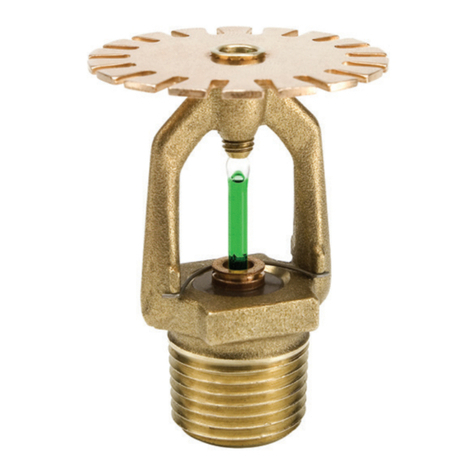
About
Vaughan Irrigators have been manufacturing low pressue travelling irrigators since 1992, and in that
time have estabilished themselves as the leader in the market.
Initially the Vaughan Irrigators were designed for euent distribution, with 80% of the 4,500
irrigators Vaughan have sold being for that purpose. In recent years, Vaughan Irrigators have
been bought by farmers who not only wish to spread euent and take advantage of the natural
fertilisers from their dairies, feedlots and piggeries, but also to water small paddocks of up to 25
hectares. By using a small travelling Vaughan Irrigator, many farmers are realising the benets of
spray irrigation compared to ooding. Not only is spray irrigation better for their crops, but also
approximately 70% of the water they previously used in ooding is no longer required and better
crop results have been achieved.
The Vaughan Irrigator Range
Junior - 10-90psi 2-8lps 25 metre throw
Standard - 10-90psi 1.25-10lps 40 metre throw (11 boom)
VCI MkI - 30-40psi 3-10lps 45 metre throw
VCI MkII - 30-40psi 3-10lps 50 metre throw
QUAD - 30-40psi 6-20lps 45 metre throw
The Vaughan Irrigator has proven itself over time to be very reliable and trouble free, extremely
easy to use. Because of our desire to remain at the front of the market, we have been the
innovators of improvements in design, such as the smooth operating, and low pressure
Sumpmaster cam. This cam allows the irrigator to operate at pressures as low as 70kpa (10psi),
where other irrigators on the market will stop operating at around 125kpa (18psi). The other
advantage of the Vaughan Irrigator is that you dont’ need expensive high pressure pumps and
piples. You can operate the Junior with a re ghting pump, which means the whole system
becomes extremely portable if desired.
Vaughan Irrigators recognised that the market needed a bigger irrigator than previously available
for a couple of reasons. Firstly dairy herds are becoming bigger and the volume of euent to be
disposed of subsequently became greater and needed to be distributed in greater volume and
secondly the farmer who wishes to spray irrigate wants to put more water down in a shorter
amount of time. Vaughan Irrigators have brought out the Quad X 4 which is capable of up to 25lps
(20,000gph).
From 70 to 280kpa (10 to 40psi), from 1.25 to 25lps (1,000 to 20,000gph) and a throw of up to 50
metres, Vaughan Irrigators has you covered.
Vaughan Irrigators is owned by AgBoss Group Pty Ltd, who are the Australian distributors of the
Milk Bar® range of teats and calf feeders. Please contact us for more information about any of our
products.



























